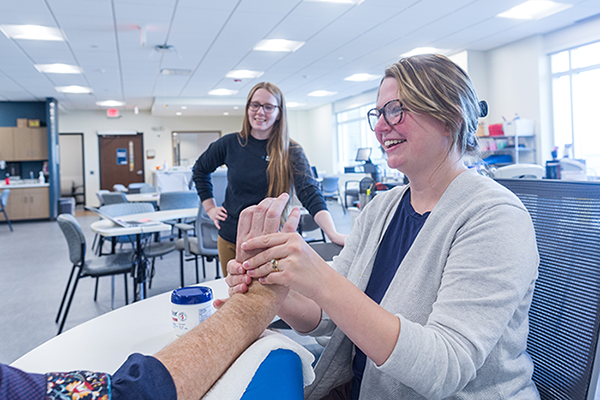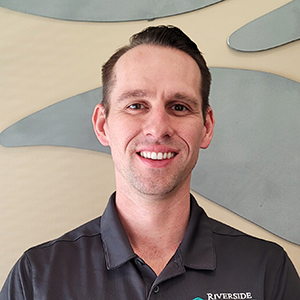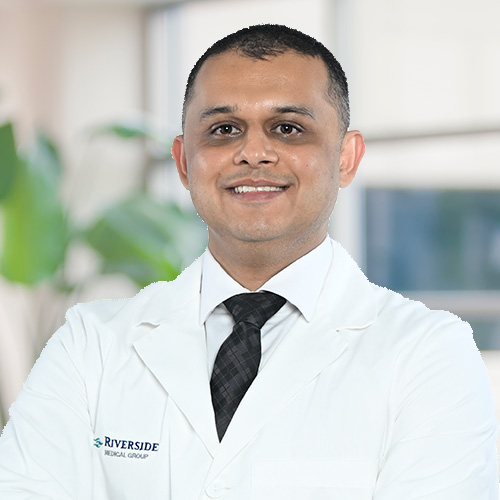Why Collaboration Is Essential for Optimizing Therapy and Rehabilitation
August 11, 2025
Categories: Rehabilitation and Therapy
 Collaboration is at the heart of effective rehabilitation and physical therapy. Whether it’s between healthcare providers, patients, or their families, teamwork plays a critical role in achieving optimal outcomes. From creating personalized care plans to ensuring comprehensive support across various stages of recovery, collaboration fosters an environment of shared knowledge and trust.
Collaboration is at the heart of effective rehabilitation and physical therapy. Whether it’s between healthcare providers, patients, or their families, teamwork plays a critical role in achieving optimal outcomes. From creating personalized care plans to ensuring comprehensive support across various stages of recovery, collaboration fosters an environment of shared knowledge and trust.
In this article, Mitch Cronk, Riverside Healthcare Outpatient Rehab Manager, discusses why collaboration is not just beneficial, but essential for enhancing therapy effectiveness, promoting faster recovery, and improving long-term well-being for patients.
From General Services to More Specialized Care
Cronk reinforces the importance of having multiple locations throughout the community to improve access to care. As healthcare needs grow, particularly in rural areas, it’s crucial to make therapy services convenient and accessible. These rural locations often focus on physical therapy, offering a wide range of services to address various conditions.
In contrast, more specialized services like pelvic health, pediatric rehab, aquatic therapy, and work conditioning are typically found in local centers near the hospital. The goal is to ensure that all patients, regardless of location, can access necessary care.
“We have the luxury of being a part of a large hospital system. So, we can access charts and files, images, labs, your medical history, etc., to get an idea of what you’ve been through and where you’re going. Not all places have that advantage,” states Cronk. “Yes, even though I’m a skilled licensed therapist and I’m going to know what questions to ask to paint the picture, having that information just puts me that much more at an advantage when you come to me.”
Hospital Support Elevates Therapy Services and Patient Outcomes
Riverside’s backing provides flexibility in designing specialized programs. The hospital’s focus on both access to care and quality allows the team to adapt and elevate the care they provide based on community needs and physician feedback.
For example, when the demand for a running-specific program arose, Riverside professionals were able to respond quickly by developing the necessary specialized training and education for their staff to meet that need. This flexibility helps improve patient experiences and outcomes.
“The hospital supports us in full, and we have the ability to build a program or train a therapist to make sure we are filling the need for both our patients and our physicians,” assures Cronk.
Stroke Recovery: Transitioning from Inpatient to Outpatient Therapy
One component of therapy revolves around stroke recovery, which begins with emergency treatment, followed by potential admission to the rehab unit for intensive therapy. During this inpatient rehab phase, collaboration is key, as physical therapy teams work alongside nursing staff, social workers, and doctors to determine the best approach for recovery.
The goal is to help patients regain as much function as possible and ensure they can return home safely. This coordination across departments ensures a comprehensive and effective recovery process.
“Let’s say you graduate from the inpatient rehab program. You did physical therapy, occupational therapy, and speech therapy. You’ve met the requirements, and now we need to deem where you go next. You might be able to go home and do so safely, but you may still have lingering impairments. This is where those post-acute services come in,” explains Cronk. “You could need to go to outpatient rehab. Or, maybe take a different route. If you’re not safe to return home, it’s possible a skilled nursing facility is the best option.”
Another potential option is home health services. After receiving a referral and checking in with their primary care physician, patients undergo an evaluation to identify impairments and develop a care plan with specific goals based on their lifestyle and needs.
Getting Started on Your Therapy Path
The first step for someone seeking physical therapy or rehab is to talk to their doctor. The doctor needs to be aware of any medical concerns, such as medications or orthopedic issues. Therapists, while not medical doctors, are trained to recognize red flags and can collaborate with the referring doctor if something unusual arises, such as cancer symptoms or drop foot.
Starting with a doctor or calling the clinic is a good way to begin the process, as therapists are ready to accommodate patients and work with their healthcare providers. “Always ask. Don’t just assume you’re stuck,” urges Cronk. “Riverside has grown to be this large entity in the community. We are the leading source of healthcare providers. There are more than enough of us to ensure access to care in some shape or form. Whether it’s just having a casual conversation or scheduling a formal appointment, start somewhere and try to be proactive.”
